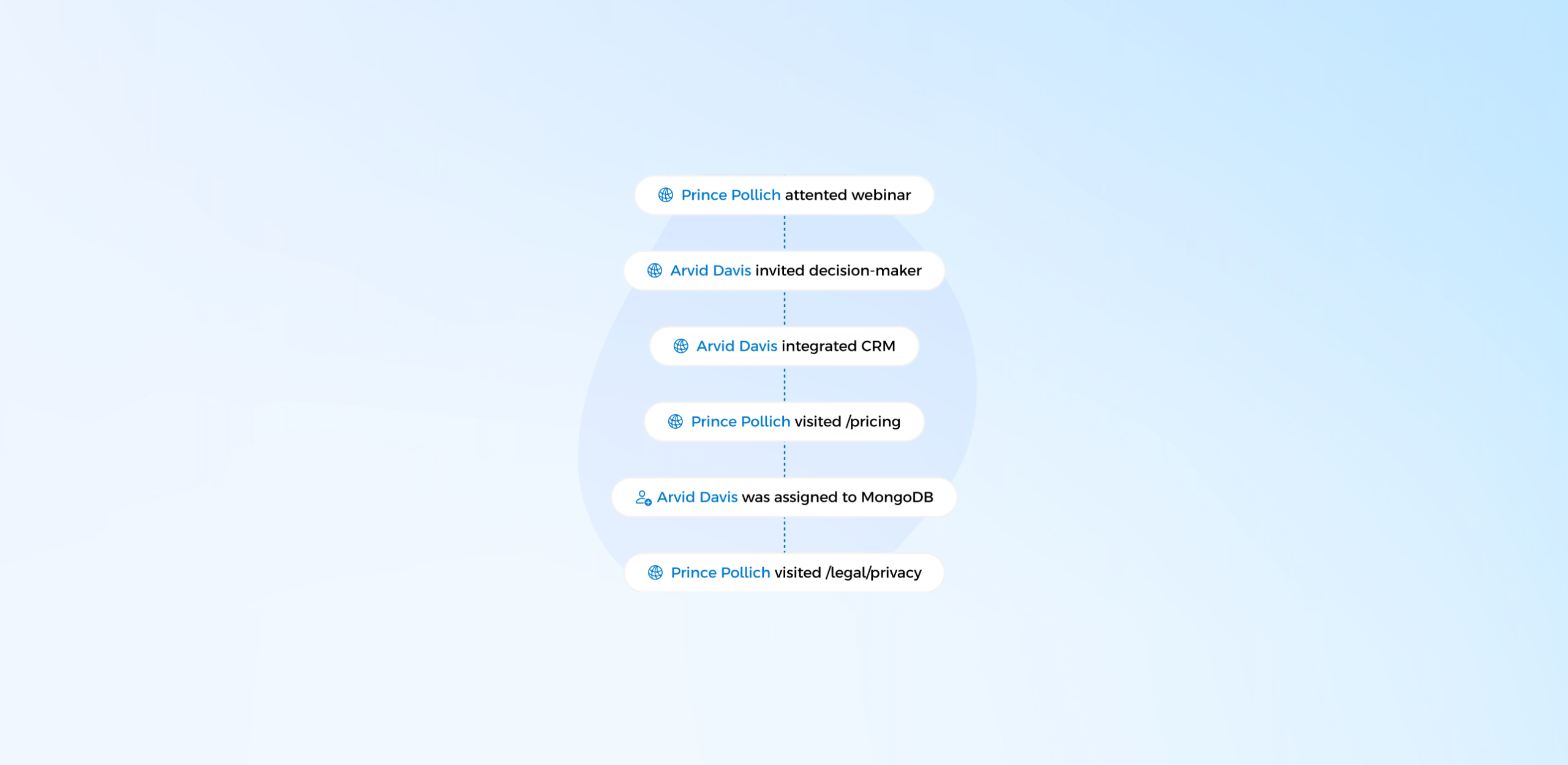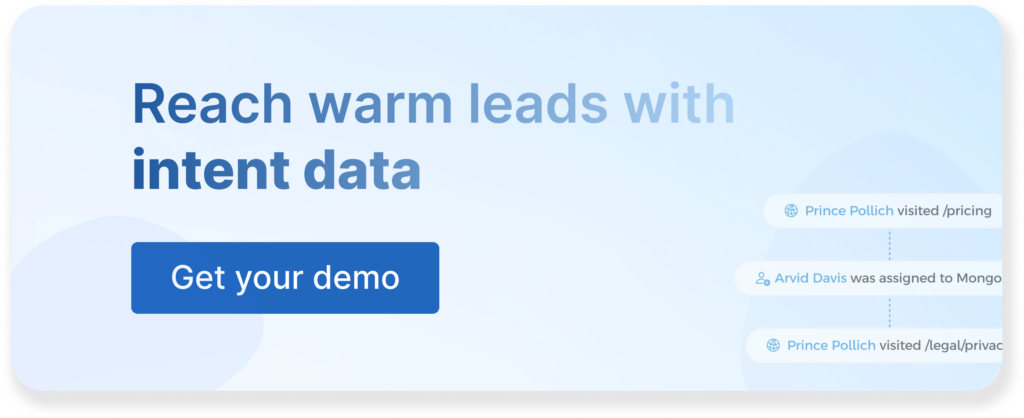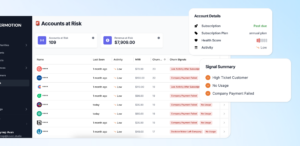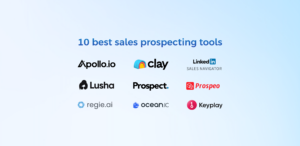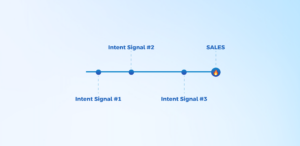Let’s say you have 10k daily traffic, 2% of them convert from visitors to users, and you and your sales team are trying to qualify those who might actually go on to use your product.
If they fit your ICP, are they really close to buying? No, it isn’t. The good news is that most of them will probably fit your ideal customer profile criteria. The bad news is that most of them won’t pay you.
This is where intent data becomes important and I want to share what it really is, how it is used and the types of it.
What is Intent Data?
Intent data, or also known as buyer/purchase signals, are the indicators that show a lead/user is performing activities towards purchase. These indicators help us predict and validate lead-to-user and user-to-customer conversions.
However, this cannot be interpreted as purchase intent only. We cannot use the full potential of these signals only in this way.
Buyer intent data can be tracked throughout the entire customer journey and can indicate upsell intent or, even more so, risk of churn.
Why Intent Data Matters for B2B Sales?
Conversion, upsell, churn prediction… All ways lead to one single outcome, revenue growth. The data we collect about user intent improves how we do these things. And, as revenue growth is where we all want to go, everything that contributes to it, especially the ones that are meaningful, are important.
But, it not just work as I shared here. Only its presence does not make a difference. It’s how you use it that truly makes a difference. There are several ways to use intent data in our strategies, from lead scoring to targeting.
1. Lead Scoring
First and foremost use case of intent data: lead scoring. Unlike common knowledge, in 2024, we shouldn’t be scoring leads based on only ideal customer-fit. It is important, though. But, not enough.
The intent data, from before interacting directly with your product to engagement with the product itself, hint us something important. Some call it PLG (product-led growth), some engagement, or some intent. Call what ever you want; it is same after all.
The performance of events that are important, or milestones, in your product increase the engagement of the user, therefore adoption, therefore intention.
Engagement -> Adoption -> Intention
The benefit is clear—by knowing which leads are more engaged and closer to understanding your value, sales teams can prioritize their efforts more effectively, focusing on leads that are more likely to convert.
P.S. You should have a clear customer journey (with milestones), proper B2B sales funnel and a well structured lead scoring model.
2. ABM (Account-based Marketing)
Two approaches here: 1. intent data into search helps identify which accounts are actively researching topics related to your service, 2. intent data into company-level usage helps how you engage with them.
This allows for a more focused ABM strategy, targeting companies that are in the buying cycle with targeted content and outreach.
The main benefit of ABM with intent data is efficiency and effectiveness. Concentrating on accounts with a demonstrated interest, you significantly increase the chances of conversion, making your marketing efforts more productive and ROI-positive.
3. Churn Prediction
A critical, yet often overlooked application of intent data is in predicting and preventing customer churn. As we advance, the ability to foresee and prevent churn becomes a cornerstone for sustaining growth.
Through intent data, companies can detect early warning signs—such as decreased engagement or exploration of alternatives—indicating a customer’s potential subscription cancellation.
The benefit here is twofold: maintaining a healthy customer base and optimizing resource to retain valuable customers. Intent data acts as a radar, alerting you to churn before it leads to a loss.
Implementing churn prediction models that effectively leverage intent data requires a nuanced understanding of customer behaviors and the factors that influence loyalty and satisfaction.
4. Warm Outbound
In 2024, warm outbound strategies are gaining popularity thanks to intent data (and also thanks to cold outbound losing popularity).
The approach shifts from cold outreach to informed, personalized communication with prospects already showing interest in your service, directly or indirectly.
Intent data informs these strategies by pinpointing prospects who are not just browsing but actively seeking solutions, providing a warm entry point for sales engagements
The efficiency of warm outbound strategies lies in their precision and personal touch, made possible by the rich insights intent data offers.
5. Targeting
Finally, targeting is emerging as one of the key benefits of intent data.
Intent data transforms targeting from a guessing game to a science, providing actionable insights that guide the development of highly personalized marketing and sales strategies.
By understanding what your potential customers are actively looking for, you can fit your message to their current interests and pain points.
The impact of advanced targeting is huge and leads to higher conversion rates, greater customer satisfaction and ultimately a stronger bottom line.
Businesses must develop a culture of data-driven decision-making, constantly refining their strategies based on evolving customer insights.
6. Product-led Sales
Intent data builds an important part of product-led strategies, and sales is, as you can assume, is the power unit for product-led sales.
Sales teams in product-led companies highly rely on the customer and behavioral data, because they have to. It is the main idea behind product-led sales, and that’s what we call intention.
Intent data not only guides the sales process but also informs product development, ensuring that the product continues to evolve in ways that meet and exceed customer expectation.
5 Types of Intent Data
Buyers can show intention via different ways, so we need to specify them under different categories.
1. Search Data
Search data involves tracking the keywords and phrases potential customers use in search engines. For example:
- Keywords searched: “Best CRM for small businesses”
- Search frequency: Daily searches for CRM comparisons
- Search platforms: Google, Bing, industry-specific forums
By analyzing these search queries, you can identify the intent behind a search, whether it’s informational, navigational, or transactional.
2. Website Interaction Data
Website interaction data captures how leads interact with your website, providing clear signals of their interest and intent levels.
- Pricing page visit: Prospects checking out your pricing page are showing a clear interest in understanding the cost of your offerings.
- Legal pages visit: Visits to terms of service or privacy policy pages might indicate a prospect is in the later stages of the decision-making process.
- Help center visit: Engagement with help or support pages suggests a desire to understand the post-purchase support structure or could indicate a user looking to solve a specific problem with your product.
- Changelog visit: Regular visits to your changelog or updates page signify a high level of engagement, suggesting that a user is interested in the latest features and improvements.
3. Customer Data
Customer data, slightly different from others, are specific details into customer profile, including demographic and firmographic.
- Demographics: Age, job title, industry, company size
- Firmographics: Business sector, revenue, number of employees, geographic location
But you should keep in mind that the data into customer alone does not reveal intent; but its fitness with your existing customers does.
4. Product Usage Data
Product usage data refers to how your product is used, including frequency, feature usage, and user behavior patterns. It informs product development and helps sales teams identify engaged users. For instance:
- Activity: Daily logins to the software platform
- Team activity: If user persona invites the rest of the team, or even buyer persona
- Frequency: Uses the software multiple times throughout the day
- Features used: High usage of premium or advanced features during a trial period
- Milestone events: Completing an event that addresses getting high value from your product.
5. Engagement Data
This is the information on how leads interact with your brand across various channels. It helps in scoring leads based on their engagement level.
- Email interactions: High open and click-through rates
- Webinar participation: Regular attendance in webinars
- Social media activity: Active engagement with posts, sharing content, commenting
6. Tech Stack Data
Tech stack reveals insights into the software tools and technologies currently used by a potential customer.
- Current tools: Use of a competitor’s CRM software
- Integration needs: Automation tools requiring CRM integration
- Renewal dates: Upcoming renewal for their current software solutions
Understanding a lead’s current tech stack can highlight compatibility issues, feature gaps, or opportunities for integration that your product can address.
What are Some Intent Data Providers?
There are three ways to gather intent data: intent data providers, data analytics software, co-op intent data, in-house (manual) tracking. Each method offers different advantages:
- Intent Data Providers: These are specialized companies that analyze intent signals. Providers such as UserMotion, Demandbase, Lusha, offer enhanced datasets on buyer intent by tracking online activities.
- Data Analytics Software: Tools like Google Analytics, Adobe Analytics, and similar platforms enable businesses to analyze their own web traffic and user interactions in-depth.
- Co-op Intent Data: Platforms like Bombora also offer co-operative data solutions, where data is pooled from multiple sources, including B2B websites, to create a broad picture of buyer intent across different industries.
- In-House (Manual) Tracking: For businesses with the capability, developing in-house solutions for tracking user behavior on their websites and platforms can be highly effective. But if your only solution is creating an Excel sheet here, it may not be performing as expected.
Track Intent Data with UserMotion
UserMotion goes beyond traditional analytics by pinpointing specific behaviors and interactions that signify buying intent. By evaluating these intent signals, it assigns scores to your leads, helping you distinguish between casual browsers and serious prospects.
With UserMotion, the focus shifts to quality over quantity. By understanding which accounts exhibit strong buying signals, you can focus on high intent accounts receive the attention they deserve.
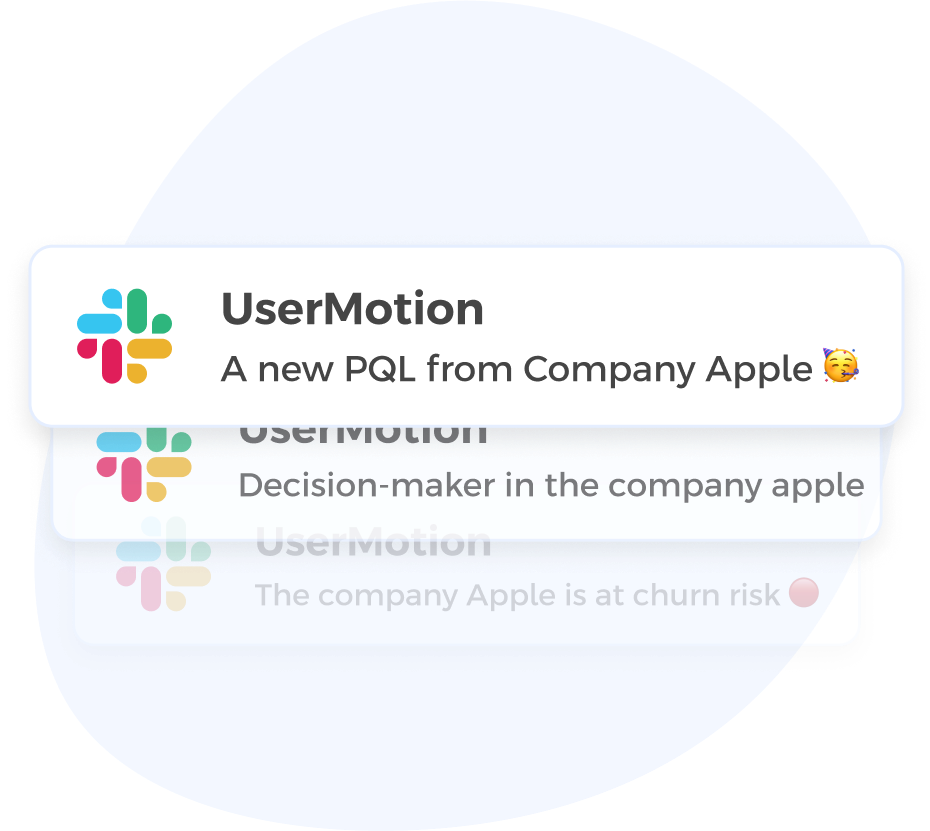
Staying updated on potential buyer movements is crucial, and UserMotion ensures you’re always informed. Whether it’s through Slack or other productivity tools, you’ll receive instant notifications when new intent signals are detected.

